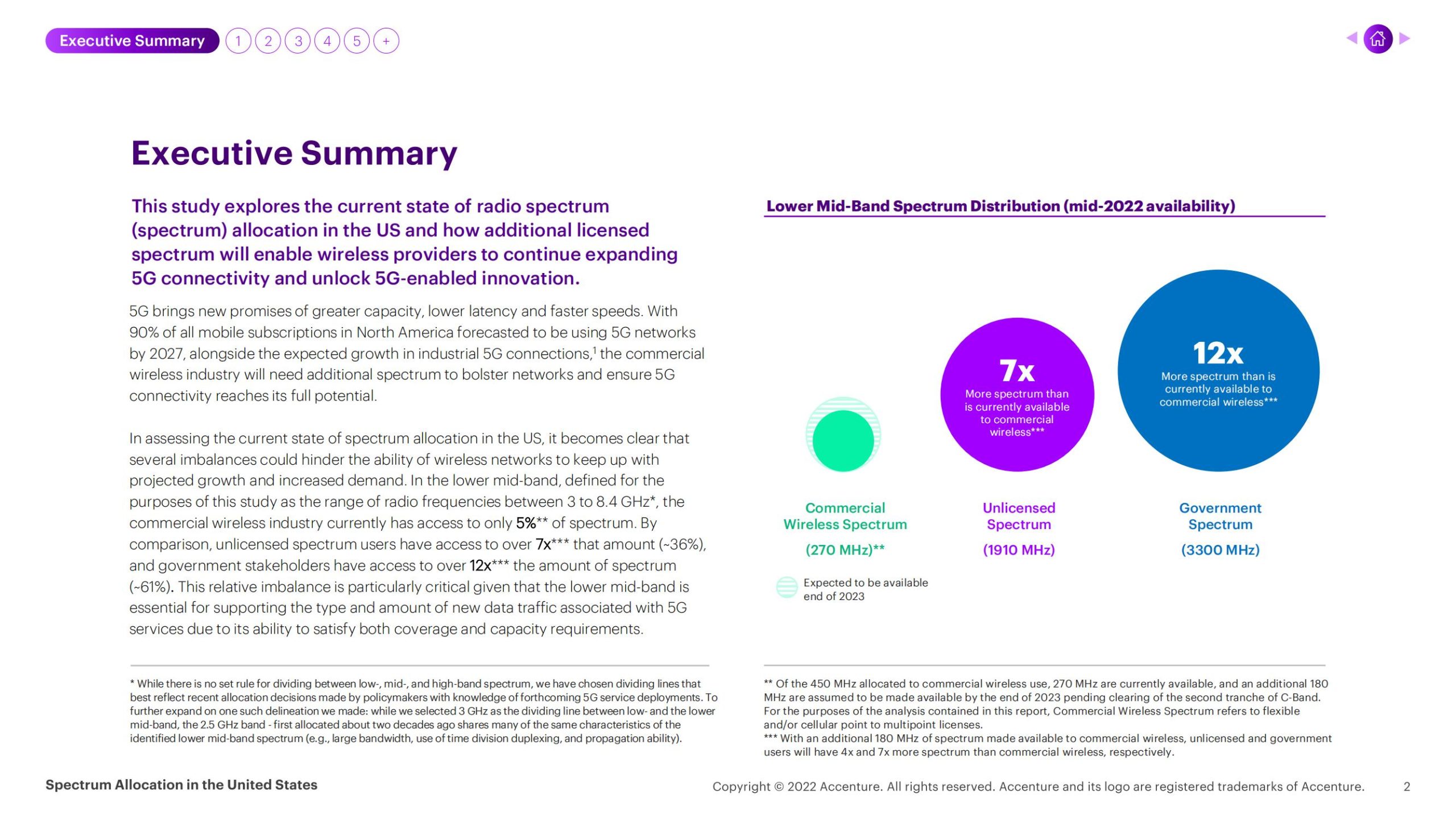To date,the commercial wireless industryhas delivered quality services to consumers by rapidly deploying the limited licensedmid-band spectrum available,being as spectrally efficient as possible, optimizingtraffic, and repurposing bands (commonly known as “re-farming”)to meet evolving demand.2However, if the relative imbalances in spectrum allocation are not addressed with more licensed spectrum made available to commercial wireless providers, consumers, businesses and public services will bear the burden of the expected network strain-through diminished quality and availability of services,and an inability to deliver onthe full promise of 5G use cases which are poised to transform the economy and help tackle climate change.
Additional licensed spectrum has been made available to the commercial wireless industry over the past two years.For example,the 3.45 GHz band,the C-band,and the CBRS band* collectively made 270 MHz available to the commercial wireless industry, withanadditional180MHzexpectedbytheendof2023.Despitethisrecentprogress further access to wide,contiguous spectrum is necessary to bring global
harmonization,limit the costs to deploy infrastructure, and ensure continued efficient use of already allocated commercial wireless spectrum. In this study, we explore the lower 3GHz,mid 4 GHz,and 7 to 8.4 GHz bands as strong candidates to bolster networks and support 5G services. Thesebands,if allotted for licensed commercial wireless use,can enable Americans toreap the promised rewards of 5G,including improved economic outcomes,environrnental benefits through carbon abatement, and technological advancement.



本文来自知之小站
报告已上传知识星球,微信扫码加入立享4万+深度报告下载及1年更新。3天内不满意退出星球款项原路退回,欢迎试用。到期续费仅需5折
(如无法加入或其他事宜可联系zzxz_88@163.com)
